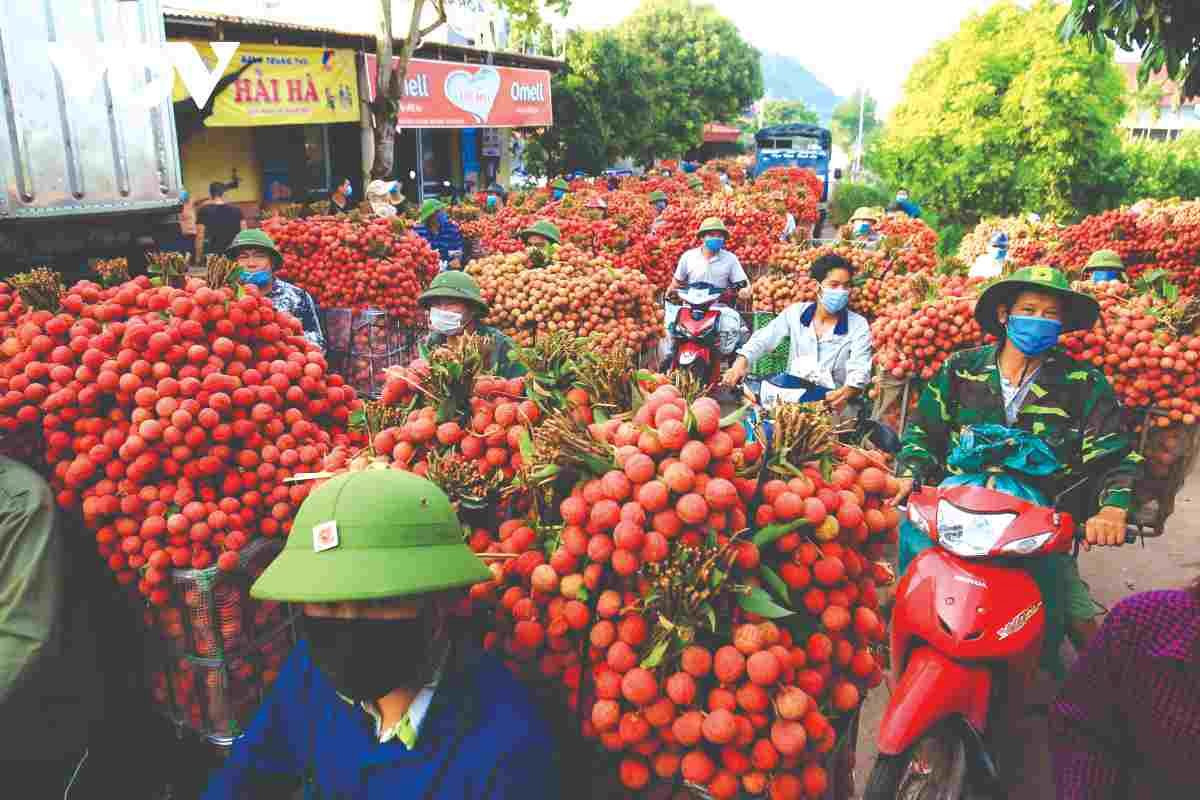The lychee season, discussing exports
English - Ngày đăng : 13:13, 04/10/2023
Potential markets for lychees
When it comes to lychees, not every region can grow and yield this special type of fruit, and the unique advantages of this tree seem to have not fully realized its true value for the land it is grown in.
In 2022, Vietnam’s total lychee production was estimated at around 320,000 tons. Bac Giang province alone accounted for an estimated 180,000 tons of lychees, with 40% being exported mainly to the Chinese market.

An interesting comparison is that if a cart carrying 10kg of lychees is exported to Japan, the seller can sell it for 4 million Vietnamese dong. However, if sold in major cities like Ho Chi Minh City, Hanoi, or Hue, the highest price would only reach 45,000 dong per kilogram. When purchased directly from the orchards, traders pay around 7,000 to 8,000 dong per kilogram. Sometimes, the price is so low that farmers don’t even bother harvesting or calling traders to come and buy.
Exporting lychees to Japan requires strict quality supervision. In the extensive Bac Giang region, only 37 planting areas have been granted approval for the Japanese market, covering an area of 300 hectares and producing about 2,500 tons.
Usually, all shipments from Vietnam have to undergo rigorous testing by Japanese authorities, with the permitted maximum residue level of plant protection substances being only 0.01 mg/kg. That standard is nearly negligible in terms of residue levels.
Quality of fruits and the awareness of growers
The VietGAP certification is lower than the GlobalGAP standard, but the way farmers and the monitoring of that certification meet the standards is also not necessarily satistactory.

Ensuring quality and standards through monitoring is challenging, especially without the consciousness of the farmers themselves, particularly in a demanding market like Japan. Japan, with its temperate climate, is not suitable for growing lychees. However, the Japanese have a fondness for lychees, considering them a premium commodity sold at high prices. To export lychees to this market, stringent requirements must be met. Lychees must have a rich, sweet taste, be juicy and fragrant, and have a bright, uniform, and blush pink color on the outside.
Each lychee fruit, when cut horizontally, must meet the prescribed diameter agreed upon by the businesses, usually not less than 25mm. A 1kg pack should contain 25-30 lychee fruits. The stem is carefully cut to limit bacterial invasion and maintain the quality of the fruit.
The challenge lies in the fact that lychees from Vietnam are highly regarded in terms of freshness, taste, color, and even weight compared to lychees from China and Taiwan. However, in a demanding market like Japan, the most important criterion is the residue of plant protection substances in each kilogram of lychees.
Vietnamese enterprises are gradually building brands and promoting lychee products in the Japanese market. This started in 2020 when lychees were introduced in the AEON supermarket chain in Japan. With the cooperation of lychee growers and the support of the Ministry of Industry and Trade, there have been many promotional activities and collaborations with Japan for lychee exports.
For a long time, farmers in Hai Duong and Bac Giang provinces have been encouraged by the government to switch from planting rice twice a year to cultivating long-term crops such as lychee, combined with aquaculture and poultry farming, in order to increase their income. Although lychee trees are naturally suited to this region, growing lychees still carries risks as they can only be harvested once a year and are susceptible to weather conditions. In some years, the trees may not bear fruit, adding further difficulties for farmers who are already facing challenges. When there is a good harvest, the selling price may not be high. How can lychees bring high value and establish a brand is a problem not only for farmers and businesses but also for the entire agricultural supply chain.

Farmers in Bac Giang have become aware of this issue. The whole village has purchased garlic, chili, ginger to ferment together with alcohol, lime, and some other biological preparations to protect the trees from pests and diseases, resulting in sweet and visually appealing fruits without the presence of harmful chemicals. Even caring for the trees and eliminating weeds requires meticulous work. Farmers employ manual methods instead of chemical herbicides and use well water for irrigation.
The Vietnamese Trade Office set up a booth to give away free lychees to attendees at the Vietnam Festival in Japan held in Yoyogi Park, Tokyo. Japanese companies have also visited lychee-growing areas to plan for purchasing and exporting. In addition to exporting fresh lychees, localities and businesses should consider value- added chains, such as lychee fermentation for juice, wine production, drying, and the manufacture of beauty products, to diversify lychee products and enhance their economic value.
